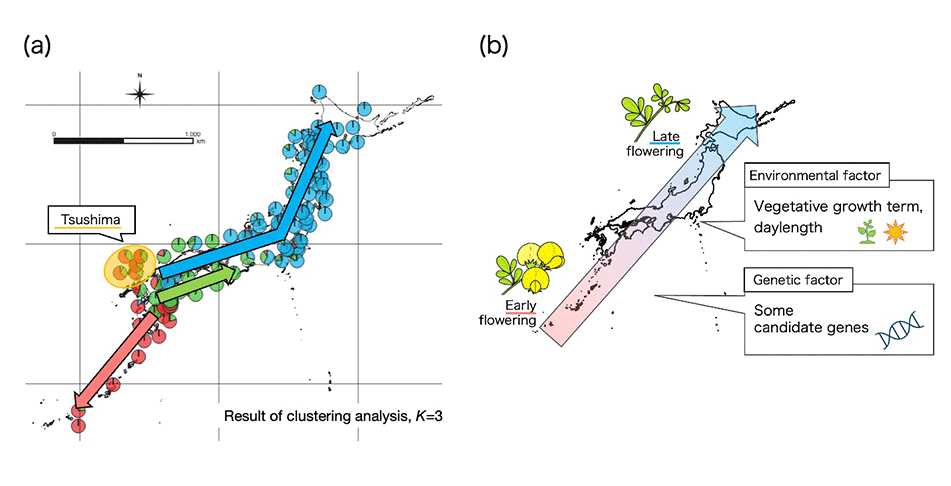2024.05.01
Intraspecific phenotypic and genotypic polymorphisms and elucidation of adaptive evolutionary mechanisms of Lotus japonicus
Bioengineering ・ Assistant Professor ・ Tomomi Wakabayashi
Biodiversity has been formed through the accumulation of small evolutions. The research material of this research, Lotus japonicus, is a herbaceous plant of the legume family that is widely distributed in Japan from Miyako Island in Okinawa to Rishiri Island in Hokkaido. Japan is a region with large environmental gradients due to various factors such as a long north-south topography and many mountains. When we observe accessions originated from various regions of Japan, we find that there are differences in various traits such as flowering time, stem color, and leaf size and shape within this species. We have focused on some traits that are particularly related to reproductive success, and have been trying to elucidate the mechanism of adaptive evolution. This species is one of the model plants of the Fabaceae family, and the whole genome data, accessions and genotype information collected from various places, etc., are available. Therefore, L. japonicus is a valuable material that can be used for research on adaptive evolution of wildlife. Utilizing these research resources, we are attempting to comprehensively elucidate the process of adaptive evolution in Lotus japonicus by estimating related environmental factors, detecting genetic factors, and inferring the influence of natural selection. In this article, I will particularly introduce research that focuses on differences in flowering time, which is directly linked to the production of seeds for the next generation.

Past geographical distribution changes and intraspecific polymorphism in flowering time of Lotus japonicus in Japan
(a) According to our results of population genetic analysis, Lotus japonicus, which is distributed in Japan, is thought to have spread to the Japanese archipelago in three main ways with climate change after the last ice age.
(b) It was shown that the vegetative growth period and photoperiod are mainly involved as environmental factors in flowering time variation of Lotus japonicus, and the continuous phenotypic polymorphism is thought to be formed by combination of several genetic factors including those detected.
Tomomi Wakabayashi NAIST Edge BIO, e0024. (2024).
